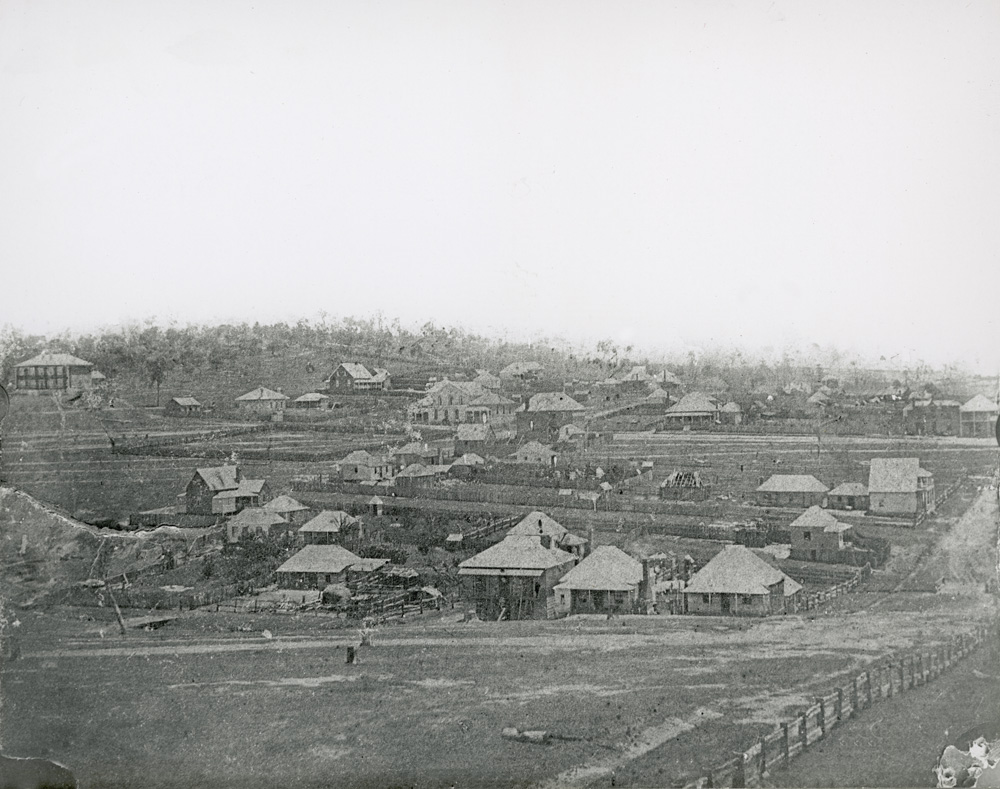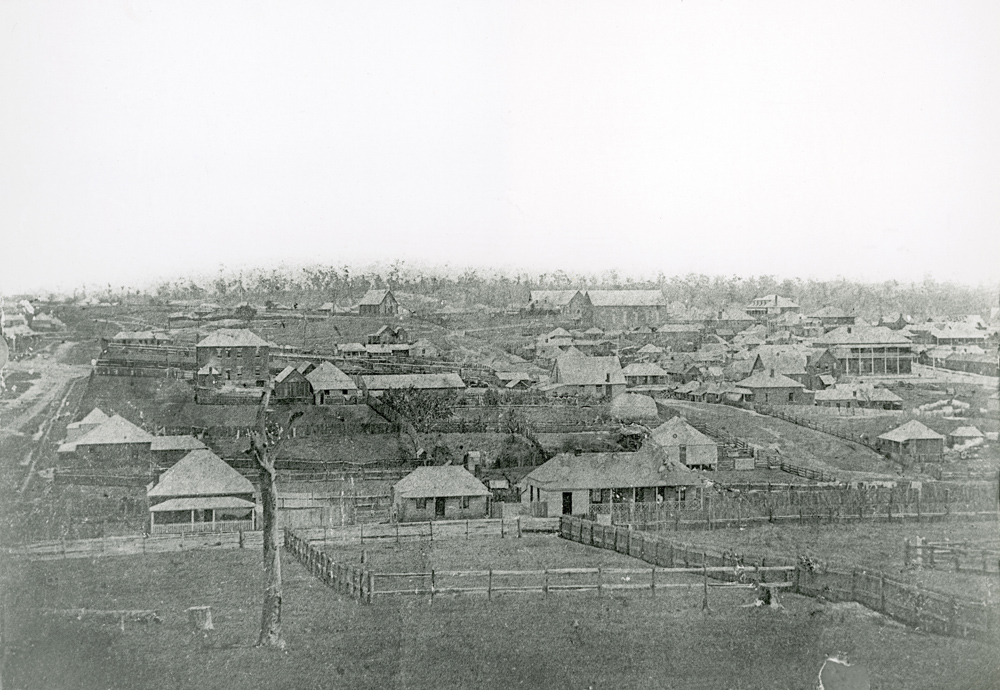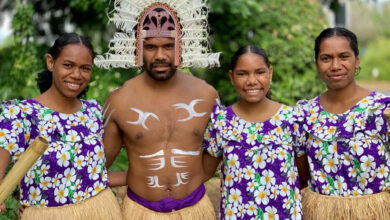It’s 164 years since Queensland officially separated from New South Wales as an independent colony.
The separation occurred on 6 June 1859. Each year, 6 June is celebrated as Queensland Day.
To mark the occasion, Ipswich City Council’s digital archive, Picture Ipswich, takes a look at the role of Ipswich and some of its community leaders at the time.
The path to separation
When the former Moreton Bay Penal Colony was opened to free settlers on the 19th February 1842, a rush of entrepreneurs headed north to stake their claim on pastoral land and to establish businesses and hotels around the former convict settlements.
A modest timber industry was established, coalmining increased in scale, and with paddle steamers plying its waters, the Bremer River became the gateway to the rich agricultural lands of the Darling Downs.
A rivalry for prestige and profits between Ipswich and Brisbane ensued.
Men of limited means could soon prosper in Moreton Bay, and the ‘convict stain’ had little bearing on respectability in the early days for those who could quickly establish their wealth in pre-separation Queensland.
Men like George Thorn (convict overseer and publican), Patrick O’Sullivan (former soldier and convict) and Frederick Forbes (son of convict and trader) had become civic leaders in Ipswich by the 1850s.
A group of these ambitious townsfolk from Ipswich and Brisbane, as well as Moreton Bay and the Darling Downs, soon began agitating for the creation of a separate colony to be formed.
Initially, calls for the separation of the northern part of New South Wales into a new colony were made by squatters wanting to regain access to cheap convict workers, as transportation to the colony had ceased entirely by 1850 (1868 elsewhere in Australia) and labour was scarce.
Later, calls for separation were made on the grounds of neglect by the colonial government based 800 miles away in Sydney. Requests for improvements in infrastructure were ignored and only four seats had been reserved in the Legislative Council for the area that would become Queensland.
Pro-separation petitions were regularly sent to London until, in 1856 the Colonial Office agreed. Before separation could take place, the question of boundaries needed to be addressed.
The New South Wales government wanted the border located 120 miles north of Brisbane (taking the border to just north of Gympie), so as to retain the limited infrastructure and prospective mining and agricultural wealth. There were calls by some pastoralists for the boarder to be as far south as New England.
The Imperial authorities finally settled on a boundary at the 28th parallel.
On the 6th June 1859, Queen Victoria signed the new colony of Queensland into being. However, the official proclamation would not be made until 10th December of that year, on the arrival of Governor George Ferguson Bowen.

The first Queensland Parliament
The conditions of separation stipulated that the new colony should have a government framework which resembled that of New South Wales.
This resulted in Queensland’s first parliament comprising of an elected Legislative Assembly (lower house) and a nominated Legislative Council (upper house, abolished in 1922). The first nominees to the Legislative Council served a five-year term, thereafter they would be given lifetime appointments.
One point of difference between Queensland’s and New South Wales’ governing structure was Queensland’s electoral system was based on a property qualification, whereas New South Wales was based on universal manhood suffrage.
This resulted in nearly one-third of the men in the colony (as well as all women) were disenfranchised. It was not until 1873 that all men would get the vote.
The first elections for the Legislative Assembly were held between 27th April and 11th May 1860 across 16 electorates with 26 MLAs elected. The electoral districts of The Town of Ipswich and West Moreton were both multi-member electorates with three members elected for each seat.
Parliament met for the first time on 22nd May 1860 in converted military and convict barracks in Queen Street, Brisbane. The term of the first parliament lasted until 20th May 1863.
The first priority of the new parliament was to establish a stable government. The second was to settle accounts with New South Wales. The third was to initiate and carry out public works. The financial situation of the new colony was less than ideal, with the grand sum of 5 1/2d in the Treasury.
As revenue started coming in, via Customs and land sales, by the end of 1860, the amount totalled £178,589. Despite a growing population (28,000 around the time of Separation), it was still necessary to borrow money from London for some of the long awaited infrastructure, that included a steam dredge for harbours, three punts, the building of Government House (£17,000), the completion of a gaol at Brisbane (£14,000 with an additional £7,000 for a wall), an electric telegraph line to out near Warwick (£16,000), and £22,000 for assisted immigration. All of 1s was put aside for roads and bridges.
Members of the legislative assembly – Town of Ipswich
The electoral district of the Town of Ipswich had three representatives for its first 13 years. Its name was shortened to Ipswich in 1872.
Frederick Forbes (1818-1878) The son of a convict, Forbes was born in Liverpool, New South Wales. He came to Ipswich in 1848, opening a store. An active member of the Separation movement he was elected to the first parliament in 1860. During his time in parliament, he supported the introduction of South Sea Islander labourers and opposed the political domination of the squattocracy.
Patrick O’Sullivan (1818-1904) born in Ireland, O’Sullivan was a soldier. In 1838 he was accused of assault with a bayonet and sentenced to fifteen years transportation. He was given a ticket-of-leave in 1845 and by 1847 he was a store keeper in Ipswich. He received a conditional pardon in 1849.
Arthur Macalister (1818-1883) was a Glasgow born solicitor who arrived in Sydney in 1839. He arrived in Ipswich in 1850 and opened a practice. He was active in the separationist movement and when elected in 1860 he joined the opponents of first premier Sir Robert Herbert. He resigned in June 1861, protesting Herbert’s policies; however he changed his mind and was re-elected at the by-election he had caused.

Members of the legislative assembly – West Moreton
West Moreton was a three member electorate from inception until 1873. The electorate was abolished in 1878, reinstated again in 1932 and abolished once more in 1949.
Alfred Broughton (1826-1895) replaced by Dr Henry Challinor in 1861. Challinor was one of the Reverend John Dunmore Lang’s immigrants arriving at Moreton Bay in January 1849 as the surgeon superintendent on the Fortitude. By April he had set up a medical practice in Ipswich. He took a leading role in support of separation. He was elected in the 1861 by-election and remained in parliament until 1868, also serving in the seat of the Town of Ipswich. In Ipswich, he was a member and office bearer of most of the town’s societies and associations, particularly those associated with the Congregational Church. He was the surgeon-superintendent of Woogaroo Lunatic Asylum, health officer at the Port of Brisbane, Inspector of orphanages, and the principal medical officer of the Queensland Volunteer Brigade, to name but a few.
George Thorn (1806-1876), often referred to as the ‘Father of Ipswich’ first came to Limestone Hill as the overseer in charge of the convicts and government stock. Following the departure of the convicts, he remained in Ipswich, opening the Queen’s Arms Hotel in 1842. An extensive land owner in the district, he helped to establish the Anglican Church, School of Arts, Ipswich General Hospital, Ipswich Grammar School, Queens Park, the North Australian Club, the Queensland Pastoral and Agricultural Society, and the racing club. His son, George Thorn Jnr. was Premier of Queensland from 1876 to 1877. Thorn snr. was replaced by Benjamin Cribb (1807-1874) in 1861.
William Nelson (1807-1887) replaced by Joseph Fleming (1811-1891) in 1861 on the grounds that Nelson, being an ordained clergyman, was disqualified for election. Fleming’s one claim to fame during his time in parliament was that he never said a word.
For more about Ipswich history, visit Picture Ipswich.


